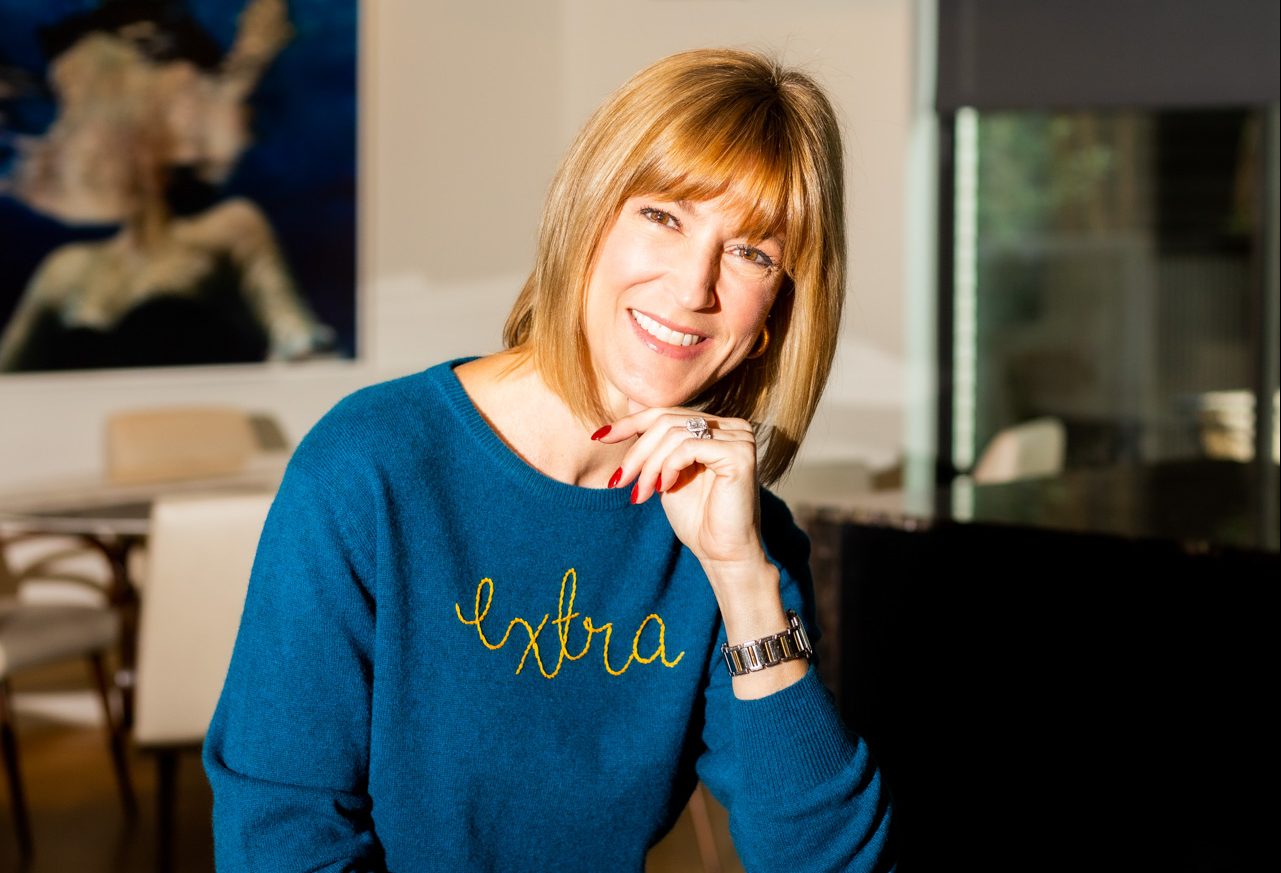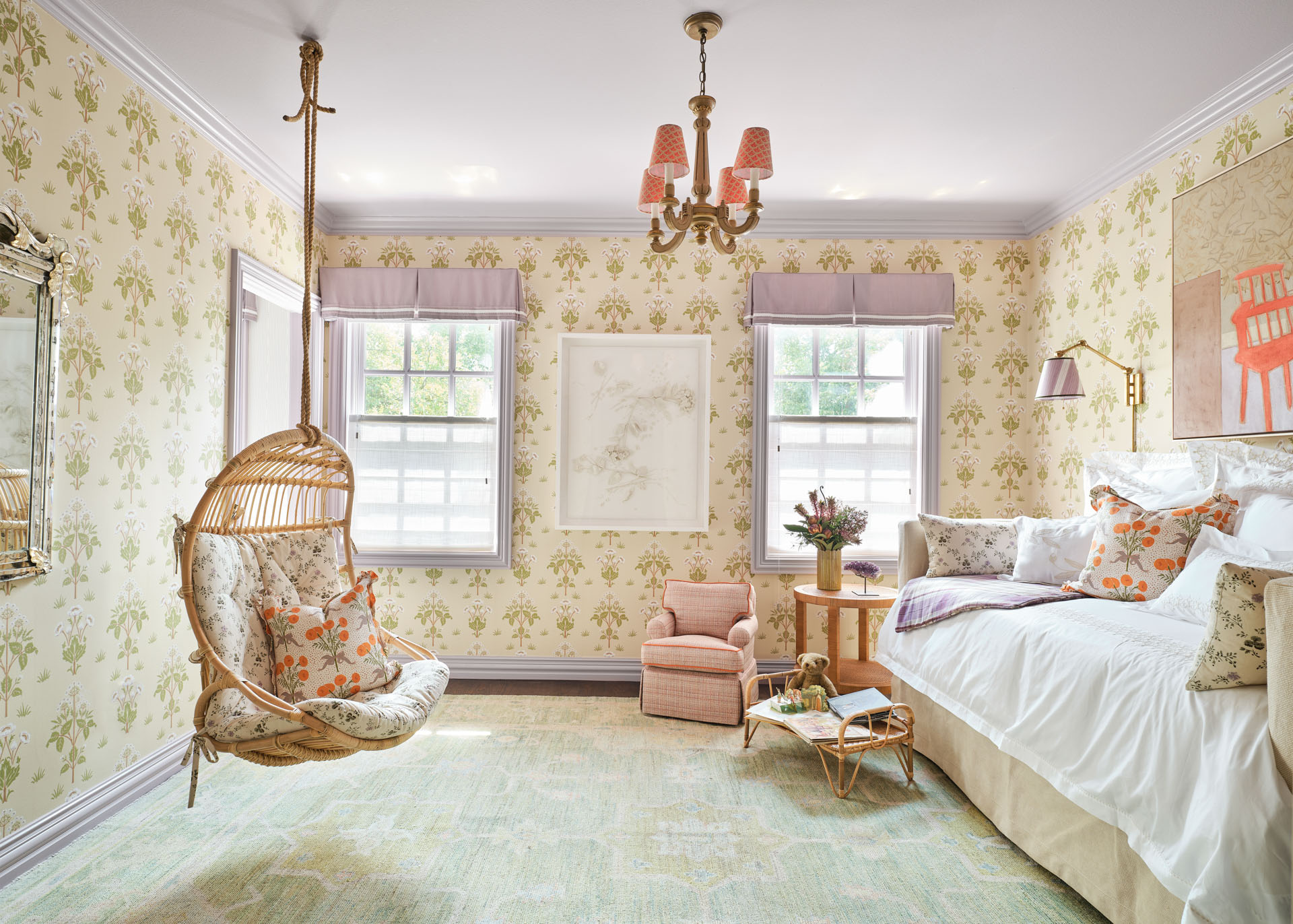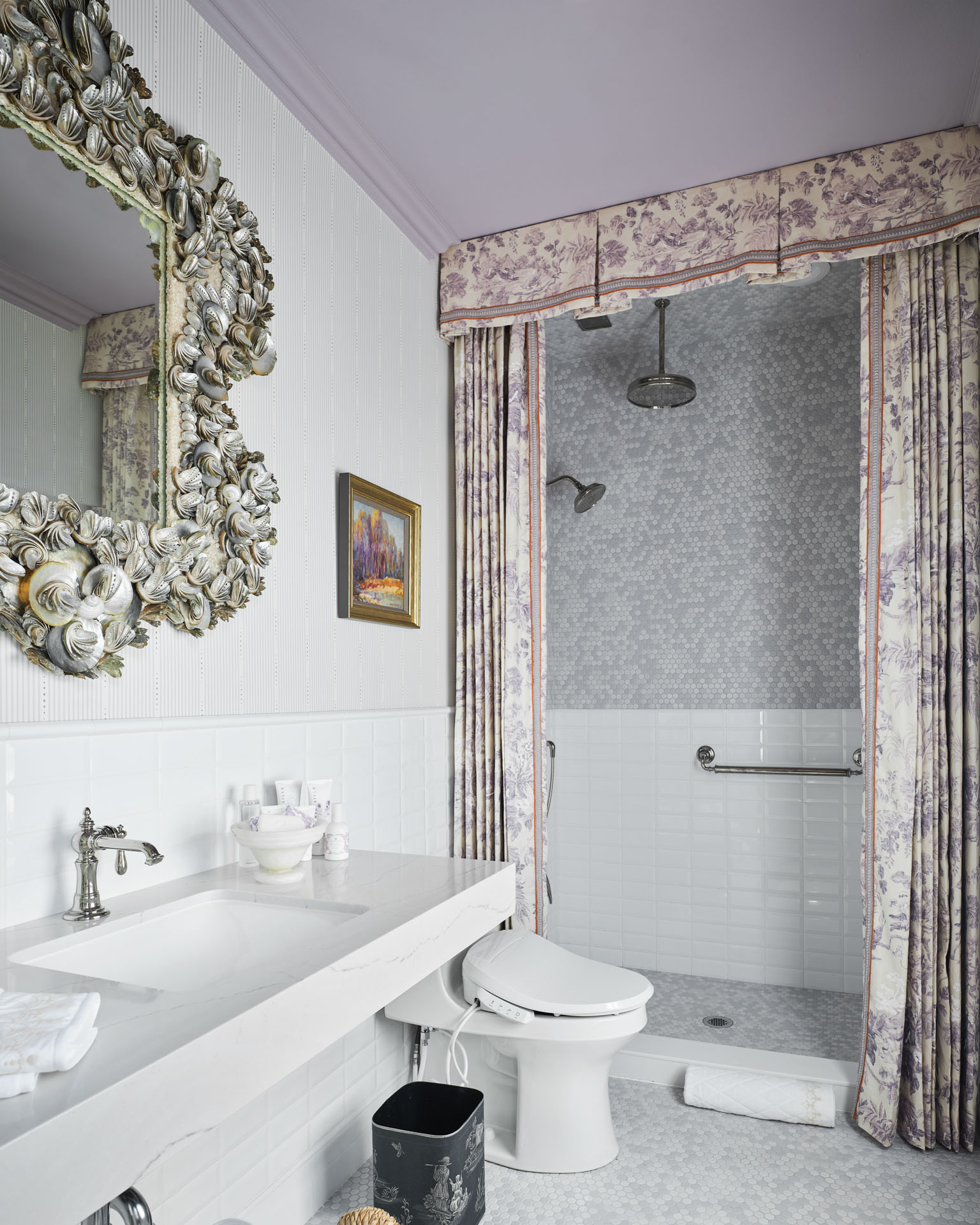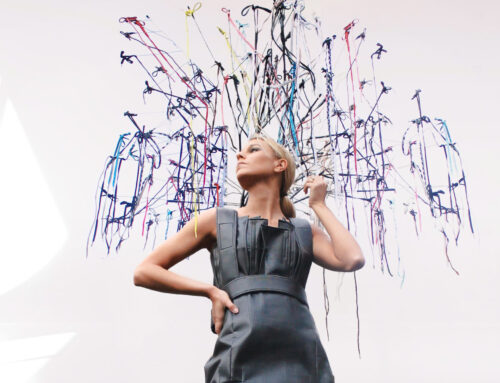
Portrait by Jessica Turner.
In a world where children and families are suffering, how could an interior design career be a worthy calling? Lakewood resident Shelly Rosenberg asked herself the question during a “midlife growth spurt.”
She’d been raising two daughters, both attending the Shelton School for students with learning differences, when son Ronen was born with Down syndrome. She figured, “It’s my lot,” and embraced a difficult but fulfilling lifestyle surrounded by other families she loved who also grappled with chronic illness, limited mobility, and other lifelong conditions.
Exemplified in her work on the prestigious 2021 Kips Bay Decorator Show House, Rosenberg is gifted, driven enough to hold her own alongside world-famous firms and professionals. But before reaching her potential, she had to realize design is not “puffery” and it has the power to change lives.
Riding a wave of recent notoriety, the Acorn & Oak founder is on a mission to demystify interior design and make safe, chic spaces possible for every household.
Everyone’s vying for your time these days — how are you juggling all this?
Every time I start to feel negative I have to remind myself that I’ve been working on manifesting all these things for a while, so it is cool. I think all mothers are amazing multitaskers. When you have disabled kids, maybe it’s divine help. I think we get some kind of cosmic boost because it’s such a hard job.
Can you tell us a little about your early life?
I went through what I would call a very colorful childhood. I think I am a deeper, humbler, more honed person because of it. It’s why as a divorced and single mom to two babies, I fought to be the best person I could be. Five years into that I met Barry. We married, time passed, and we figured we were not going to be parents again … then I was pregnant with a son.
How did that pregnancy change your life?
Our very first sonogram showed markers of Down syndrome. I remember thinking, “Wow, OK, I guess this is just my life. I’m not going to have a typical child.” Doctors saw it early, so I had a choice of whether I wanted to terminate. We agonized calling about it for a few weeks of tears and prayers. I am glad I had a choice. I want every woman to have one. But we talked to other families. They told us yes, it’s hard, but it can be an absolutely brilliant, beautiful, magical life and not as scary as some would have you believe. We decided, we have the means, a stable home. And in spite of all the potential devastations doctors warned of, Ronen was born completely healthy. Zero issues. Just has an extra chromosome. He’s 9 now. And he is a little Buddha.
And how did that shift the trajectory of your home design career?
We began thinking our outside lives didn’t match our insides. We were going through this beautiful midlife growth spurt. Ronen’s birth led us to become part of this community of people who are making daily decisions that are heavy, deep and real. It made all the superfluous stuff feel inauthentic. Friends drifted away, and that’s OK. It was a blessing, because we discovered a new community.
I just turned 50, and in years leading up, I was re-assessing, thinking about what I can do with my career that’s going to feel as deep and meaningful as these friendships and this journey. It felt a little ridiculous, for example, fielding complaints about a $75,000 coffee table when I’m about to go visit a friend whose son with Down syndrome is hospitalized with leukemia. At the time, in my mind, design was about aesthetics and wealth — a luxury business that didn’t jibe with this other lifestyle. I talked to my momma friends, and they go, “Hello! Why can’t you design for people with a disability?” That’s how it started.
Photography by Stephen Karlisch.
What did that look like on the professional front?
To justify the shift, ego wise and among the design friends, I looked into the science behind design. It’s not just me wanting this pious life, you know? There were more angles to this. What I found is that there is an incredible amount of evidence-based scientific research that interior design has great power to affect society’s health. I am paraphrasing a researcher who said, because we are inside 90% of our day, architects and designers have more power to affect health and wellness than actual medical practitioners. It’s not just about how aesthetics can make you feel or even affect your immune system. We can go deeper — let’s look at water and air quality, off gassing of toxins that are filling our homes from disposable furniture with glues and foams that are filled with those forever chemicals. It’s a rabbit hole.
That’s a lot. How are you using this?
I’m teaching my clients. I’m starting to speak and teach designers and architects. I don’t go negative. You can scare the hell out of people and get compliance, but that’s not my MO and I never feel like that works as well as showing people all the amazing benefits of things that aren’t super difficult or expensive, like getting a Brita water filter.
What it comes down to is that this approach reaches everyone — I don’t care whether you’re money driven, mission driven or you want to be famous, I have an argument that looking into building more universal spaces that support more people is better for your bottom line.
How did you wind up as one of 26 (of a gazillion applicants) selected to work on this year’s Kips Bay Show House — which Architectural Digest called “the ne plus ultra venue for high end interior design”?
My best friend Amanda Lang and I went to the show house Dallas’ inaugural year. We were like, if we could do this, it could help the cause, give us a national stage to talk about disability and accessible design. But, if we were selected, I don’t even have an employee, I worried I could never pull it off. She said she’d help. Her daughter has Rett syndrome. And my heart goes out to them. It’s another level.
In the application, I asked if anyone’s ever done a handicapped room in the show house. I worried a little that they might not want anything political or sad. This is supposed to be about luxury. But it happened.
How did you and your zero employees manage this?
We overworked ourselves, but got it done. Amanda and I enlisted a small-scale contractor, Sam Graham’s 2g Habitats. We needed him — we’re here working alongside designers like Martyn Lawrence Bullard, who has a staff of maybe 75 rock stars, and we’re working from carpool lines, making chicken nuggets while ordering wallpaper. Our husbands both were a little frustrated at the time.
How did the experience play into your bigger-picture plans?
The recognition from national media — even a little blip in AdPro (Architectural Digest) — it’s a tiny snowflake that starts to snowball, where they start thinking about luxury rooms for certain needs, aging in place, and begin understanding that this is an important thing to start discussing.
If I can plant seeds with every other designer and architect, then they run with it, we start scaling as a society. I’m not a great business woman. I’m a creative thinker. A nurturer. But I’ve got bills to pay like everyone else. It took some time to figure out what my business was. As usual, I sought input from families about what they needed, and it turns out they don’t want a consultant. Every person said, I don’t want one more email. I want you to come to my house, hold my hand and do it for me. And I do want to be in people’s homes doing design. Not just writing and advising on the website. So I may be working with one or two clients at a time right now, implementing inclusive, universal design that fits their lives.
The goal is, make enough money to, at some point, create a foundation where the earnings can trickle back to families that could not afford to hire a designer. In Dallas ISD, 80% of our students are under the poverty line. There’s so much of Dallas that is desperate for help. I am wired to work with the underserved- not the typical design client, but I plan to change that.
Interview has been edited for brevity.
Virtually tour the Kips Bay Decorator Show House here.








